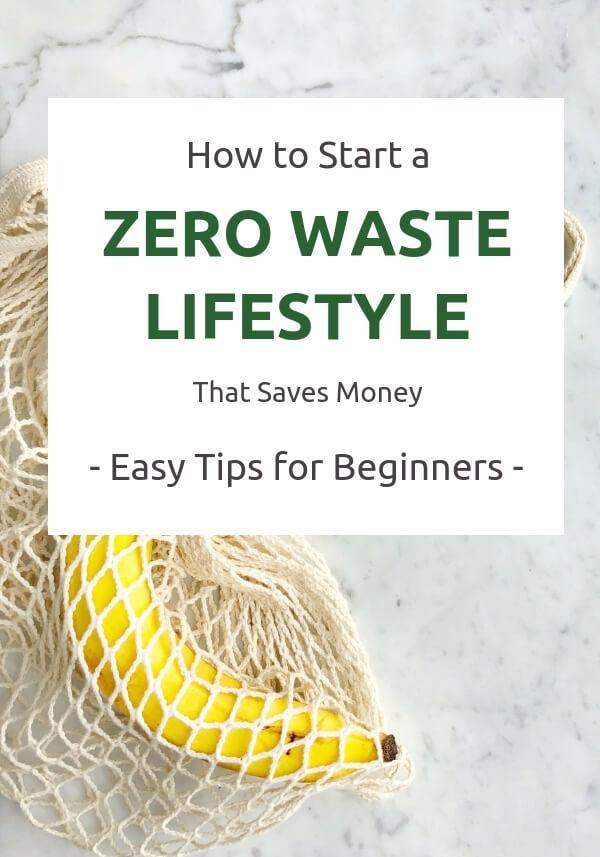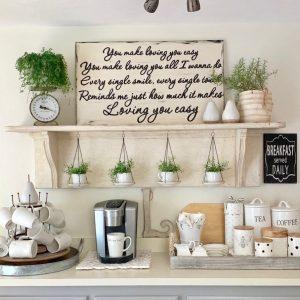Purchasing your dried goods in bulk, using dishcloths instead of disposable sponges, and ditching plastic wrap for beeswax. There are a lot of simple changes that can help make your kitchen zero waste—and that also includes some fun and stylish DIY projects. Check out the 7 DIY kitchen ideas below that will help the environment and support your zero waste lifestyle.

1. Make Non-Toxic Scented Cleaner
Ditch those plastic bottles filled with chemicals and use the power of nature to scrub down your home. While just plain vinegar will do the job, consider infusing it with fruit peels and herbs. You can use lemon, orange, or grapefruit peels to get a citrus scent. Or, try infusing vinegar with some lavender for a bit of floral sweetness. Want something with earthier tones? Throw in some herbs like sage and rosemary.
To make a scented cleaner you will need:
- Vinegar
- Mason Jar
- Infusions of your choice
No exact ratios or recipe is needed for mixing these cleaners. But if you’re looking for different scents, give one of these DIY infused vinegar recipes a whirl.
2. Sew Some Sponges
A reusable sponge, also called an unsponge, doesn’t take long to make and can help you ditch throw away sponges for good. The beauty of reusable sponges is that they can be used and washed hundreds of times, they are much more stylish than regular sponges, and you can upcycle worn-out clothing or fabric scraps to make them.
To make a reusable sponge you will need:
– Fabric
– Scissors
– Pins
– Thread
– Sewing machine or needle
Want to try your hand at knitting instead? Make a twine scrubbing sponge. They’re great at scrubbing off stuck-on food and compostable at the end of their life.
3. String Together a Produce Bag
To make a netted produce bag, all you need is some macramé string and scissors. That’s it, that’s all! By making a series of knots with the string, you can create a netted bag that is perfect for carrying groceries. Plus, it won’t get onion skins and other produce fallout stuck in it.
While this bag has all the makings of a great reusable grocery bag, you can also make a produce bag by crocheting or upcycling clothing.
4. Use Jars to Expand Your Plant Collection
Don’t recycle those glass jars just yet. While they’re great for bulk shopping, they can also help you expand your plant collection. Try one of these jar planter ideas:
Herbs: Place rocks at the bottom of the jar for drainage, followed by soil. Then plant some herbs. Not only will you always have fresh herbs at your fingertips for cooking, but they also look great sitting on a windowsill.
Propagation: Take a clipping from an existing plant and plop it in a jar filled with water to grow new roots. While this method for propagating plants with water doesn’t work for all types, it works well for ivy, pothos, prayer plants, peperomias, and many kinds of herbs—to name a few.
Food Scraps: Place the bottom of celery, green onions, leeks, cabbage, or lettuce in a jar with water and watch it regrow.
5. Get Busy with Beeswax Wraps
Its time to ditch the plastic wrap and preserve your food with something more eco-friendly—and stylish! Beeswax wraps work much like plastic wrap as it will cling to itself, as well as dishware. Except, it is made with fabric and can be used hundreds of times before being composted or reactivated.
To make beeswax wraps you will need:
– Cotton fabric
– Beeswax
– Pine Resin
– Jojoba Oil
– Scissors
– Paintbrush
– Baking sheet
– Oven
This process is super simple. You melt the wax and resin onto the wrap, paint it on, then let it dry. After a while, if you feel your wrap has become less “sticky”, you can repeat the process and your wrap will be good as new.
6. Dye Fabric with Food Scraps
Don’t let wilted spinach or onion peels go to waste. Instead, turn them into eco-friendly dye. All you need for this project is some scraps, water, and a pot to boil them in. Simply place the scraps in the pot and use just enough water to cover, then boil.
Here’s a quick color guide:
Red: Beets
Orange: Orange peels
Yellow: Onion skins or turmeric
Green: Spinach
Blue: Blueberries
Purple: Red cabbage or avocado pits
Pink: Strawberries, raspberries or diluted beets
Use these natural dyes on 100% white cotton or to color eggs.
7. Create a Farmhouse Style Serving Tray
If you have a wooden cutting board with no life left in it, turn it over to create a charming serving tray. All you need for this DIY is your cutting board, along with a couple of metal handles to screw on top. Don’t have a cutting board? Scour second-hand shops and see if you can’t find one that suits your needs.
Not only will no one have a serving tray quite like yours—this board is sure to stir up some great conversations at your next get-together—but now you will have the perfect place to make a charcuterie board. Bonus points if you can source some of the charcuterie boards treats from a Farmers’ market or local bakery to reduce your ecological footprint further.
Zero waste is a great way to save money and the environment, but it can also lead to some great DIY projects. Whether you need new kitchen sponges, want to expand your plant collection, or are craving a fun and functional project, zero waste DIYs have you covered!




